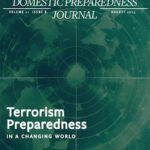Robotics and automation have emerged as transformative technologies crucial in emergency management, humanitarian relief, and disaster response fields. These advanced technologies can enhance efficiency, safety, and effectiveness in responding to crises and mitigating hazards. Robotics “refers to the design, construction, and operation of robots,” while automation involves using technology to perform tasks with minimal human intervention. Part 4 of this five-part series explores the concepts of robotics and automation, their applications in all-hazards emergency management, humanitarian relief, and disaster response through worldwide examples, and their significant contributions to these critical fields.
Understanding the Basics
It is critical to begin with a general understanding of robotics and automation. Robotics is a multidisciplinary field that combines elements of mechanical engineering, electronics, computer science, and artificial intelligence to create machines called robots. These robots can interact with the physical world and perform tasks autonomously or under human control. Robotics development has led to a diverse range of robotic systems, such as industrial robots used in manufacturing, medical robots for surgery, and uncrewed aerial vehicles (UAVs) for surveillance and reconnaissance.
Automation uses technology to perform tasks with minimal human involvement. It aims to improve productivity, reduce human errors, and enhance efficiency. Emergency management and other processes can apply automation to manufacturing, transportation, and data analysis. It relies on sensors, actuators, and algorithms to automate tasks that otherwise would require human labor.
Examples of Robotics and Automation Applications
Robotics and automation have many applications in all-hazards emergency management, humanitarian relief, and disaster response. The following are five such applications.
Robots with advanced sensors, cameras, and mobility capabilities can perform search-and-rescue operations in dangerous or inaccessible areas for human responders. For instance, after Japan’s 2011 earthquake and tsunami, robots were deployed to search for survivors in collapsed buildings, saving valuable time and reducing the risk of exposure to radiation for human responders.
Robotics can provide essential medical support in disaster zones. Robotic surgical systems enable remote surgery performed by expert surgeons, allowing them to operate on patients even if they are geographically distant. This technology can be invaluable when local medical facilities are overwhelmed or destroyed.
Drones and UAVs with high-resolution cameras can rapidly assess and map disaster-affected areas. This real-time data helps emergency responders identify the most impacted areas and plan their response and recovery operations accordingly. For example, in the aftermath of Hurricane Maria in Puerto Rico, drones helped to survey the damage and assist in relief efforts.
Automation technologies, such as autonomous vehicles, can aid humanitarian logistics by transporting essential supplies and resources to affected regions. Self-driving trucks and delivery drones can reach remote or dangerous areas without risking human lives. During the COVID-19 pandemic, drones demonstrated this capability to deliver medical supplies in various countries.
Environmental monitoring and managing natural disasters like wildfires and floods employ robotics and automation. Robots can navigate hazardous terrain to gather data on environmental conditions, track the spread of fires, or assess flood levels. This information aids in making informed decisions and coordinating emergency responses effectively.
Improving Emergency Interventions
In conclusion, robotics and automation have revolutionized all-hazards emergency management, humanitarian relief, and disaster response. These technologies offer innovative solutions to complex challenges, improving emergency interventions’ efficiency, safety, and effectiveness worldwide. From search-and-rescue operations to medical assistance and disaster mapping, robotics and automation applications continue to expand, saving lives and alleviating suffering during crises. As technology evolves, integrating robotics and automation in emergency response will become more vital in safeguarding human lives and minimizing the impact of disasters.
Links to other articles in this series:
Part 1 – Information and Communication
Part 3 – Artificial Intelligence and Machine Learning
Part 4 – Robotics and Automation
Part 5 – Legal and Privacy Concerns

Ian Pleet
Ian Pleet is committed and dedicated to serving as an outstanding example of an emergency management professional with over thirty years of hands-on expertise. He is widely recognized as an adept manager of high-risk emergencies, with a strong focus on addressing chemical, biological, radiological, nuclear, and explosive threats (CBRNE), as well as weapons of mass destruction (WMD) and infectious diseases. His record of accomplishment is marked by the successful design and execution of exercises, delivering adult education using high-fidelity simulations, and establishing effective incident management systems during emergency responses. Moreover, Mr. Pleet is renowned for his ability to advocate policy and oversee program reviews, and he is considered an authority in risk management. He plays an active role in emergency management as an instructor for emergency management and incident command courses, contributing to industry publications and providing technical oversight for textbooks before publication. He is a pro-board-certified fire officer IV, FEMA Professional Continuity Practitioner, and DoD Antiterrorism Officer.
- Ian Pleethttps://domesticpreparedness.com/author/ian-pleet
- Ian Pleethttps://domesticpreparedness.com/author/ian-pleet
- Ian Pleethttps://domesticpreparedness.com/author/ian-pleet
- Ian Pleethttps://domesticpreparedness.com/author/ian-pleet





